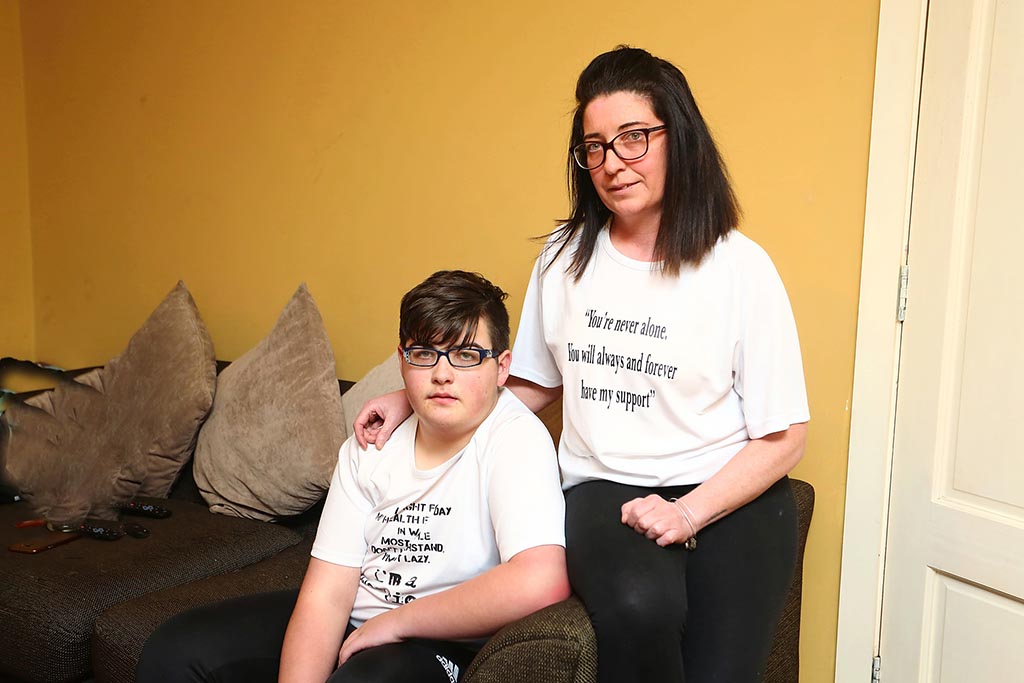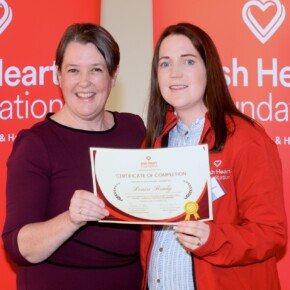How narcolepsy has affected one Southside boy
Dublin People 24 Mar 2018
Rachel Farrell
CLONDALKIN mother Michelle Bambrick first noticed her son randomly falling to sleep when he was just over five-years-of-age – a few months after he got the swine flu vaccine.
Now aged 13, TJ was diagnosed with narcolepsy and cataplexy after receiving the swine flu vaccine Pandemrix in 2010.
Narcolepsy is a neurological disorder that creates a disturbance in the sleep-wake cycle. Its symptoms range from excessive daytime sleepiness to hallucinations and sleep paralysis.
Approximately 100 Irish people developed narcolepsy after receiving the H1N1 swine flu vaccine in 2009 and 2010, and TJ was one of them.
“In August of that year we noticed a difference in TJ because he was getting tired a lot and napping during the day,” Michelle explained.
“He didn’t seem to have the energy to play. That’s when we started noticing how he’d start falling over on the floor as if his knees couldn’t hold him. We knew that something wasn’t right so I brought him to the GP.”
It took the family five years to get an official diagnosis. There was a misdiagnosis of thyroid problems and low oxygen levels until a doctor Michelle met in Tallaght Hospital suggested she look at the links with any vaccines he’d received as a child.
“At that stage I had never heard of anyone developing narcolepsy through the swine flu jab or anything like that,” Michelle said. “They sent his file to Temple Street and that’s when he was diagnosed with narcolepsy and cataplexy in 2015. He’s been on trial and error with his medication since then.”
A support group called SOUND (Sufferers of Unique Narcolepsy Disorder) was set up by parents of children who developed narcolepsy in a similar way to TJ. They currently provide support for 87 families across the country.
According to SOUND, the Pandemrix drug caused the immune system of sufferers to mistake orexin (the brain regulator of sleep, wakefulness and appetite) for the swine flu virus. Some people developed narcolepsy alone. Others suffer from narcolepsy and cataplexy combined – which is the sudden loss of muscle tone often brought on by laughter or strong emotions.
TJ takes frequent 10-minute naps throughout the day to deal with the condition, as well as medication.
“The school is very good with him. They allow him to nap when he needs to nap,” says Michelle.
“He does football, so if he has training or anything he’ll have to nap before that. He takes more meds at night time because otherwise he’d get very bad hallucinations.”
SOUND is calling on the State “to fulfil the duty it’s morally bound to provide” to sufferers of the condition. Michelle believes more awareness of narcolepsy is needed.
“Educating people about it, especially when there are so many cases of it coming out, is important. For TJ as well growing up it’s important so he doesn’t have to explain himself every time he falls asleep.
“In school, he had a new teacher and she was asking him about it. When he came home he wrote her a letter rather than having to talk about it. If people were more educated it would make life for him and other people easier.”











